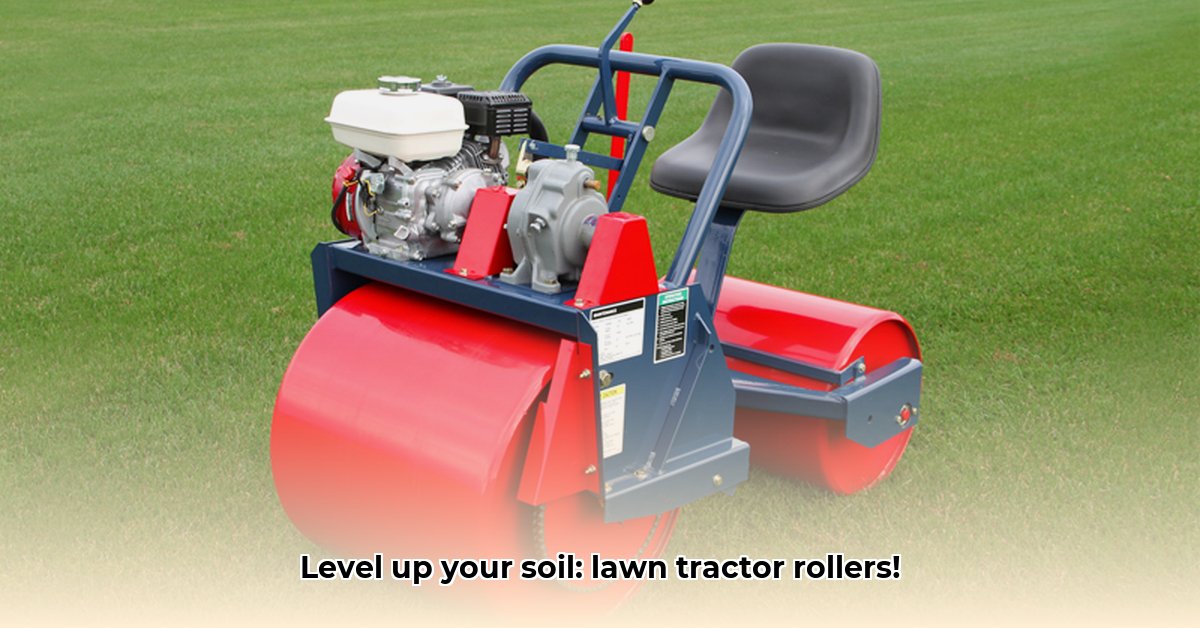
Lawn Tractor Rollers: A Novel Approach to Sustainable Soil Management
Could a simple lawn roller, typically used for maintaining pristine lawns, contribute to more sustainable farming practices? While not yet a widespread technique, the strategic use of lawn rollers presents intriguing possibilities for improving soil health and optimizing crop yields. This article explores the potential benefits and drawbacks, providing actionable steps for farmers, researchers, and manufacturers interested in exploring this innovative approach. For more DIY lawn tractor projects, check out this helpful resource: DIY Lawn Tractor Projects.
Pressing the Soil: Benefits and Cautions
The primary function of a lawn roller is soil compaction. While counterintuitive in sustainable agriculture, which often advocates for loose, aerated soil, controlled compaction offers potential advantages. Gentle compaction can improve seed-to-soil contact, potentially enhancing germination rates. Furthermore, firmer soil may reduce water runoff, conserving this precious resource. However, excessive compaction can severely harm soil health, hindering root growth, reducing aeration, and negatively impacting soil biodiversity. This necessitates a careful, data-driven approach. The success of this method is highly dependent on soil type and moisture content, much like baking a cake—too much pressure creates a dense, unusable product, while too little results in a crumbly failure.
Core Insights:
- Controlled compaction can improve seed germination and water retention.
- Over-compaction can severely damage soil health and reduce yields.
- Success depends on soil type, moisture levels, and crop selection.
A Step-by-Step Approach to Experimental Implementation
To effectively assess the viability of lawn rollers in sustainable agriculture, a structured, data-driven approach is paramount. Here’s a practical framework:
Comprehensive Soil Analysis: Conduct a thorough soil test to determine soil type, structure, and existing compaction levels. This foundational step is crucial for tailoring the roller application.
Small-Scale Controlled Trials: Initiate small-scale experiments, comparing rolled and unrolled control plots within the same field. This minimizes risk and allows for precise comparison of results.
Meticulous Data Collection: Maintain detailed records throughout the trial period, monitoring seed germination rates, water usage, crop growth, and overall yield. Accurate data collection is crucial for drawing valid conclusions.
Iterative Refinement: Analyze the collected data to determine the optimal rolling pressure and frequency for specific soil types and crops. This is an iterative process; adjustments should be made based on observed results.
Collaboration: A Multi-Stakeholder Endeavor
The successful integration of lawn rollers into sustainable farming practices necessitates a collaborative effort involving multiple stakeholders:
Farmers: Provide on-the-ground expertise, executing trials, meticulously documenting results, and sharing valuable real-world data.
Researchers: Develop standardized testing methodologies, ensuring consistency and allowing for meaningful data comparison across different locations and conditions. Their crucial role is to ensure scientific rigor.
Manufacturers: Design and develop specialized rollers tailored to agricultural needs, potentially incorporating adjustable weights and widths to accommodate varied soil types and farming conditions.
Policymakers: Facilitate the process through research funding, financial incentives, and regulatory support for sustainable practices. Policymakers need to create a supportive framework that allows for the adoption of evidence-based practices.
Weighing the Risks and Rewards
The use of lawn rollers in sustainable agriculture presents both potential benefits and significant risks. While controlled compaction offers advantages such as improved germination and reduced water runoff, over-compaction presents a critical threat to long-term soil health. A cautious, data-driven approach, prioritizing soil health and employing complementary sustainable practices, is essential for safe and effective implementation.
The Future of Lawn Rollers in Sustainable Farming
Currently, the application of lawn rollers in large-scale farming remains limited. However, rigorous research, technological innovation, and collaborative partnerships hold the key to unlocking its potential. This simple tool may hold the key to enhance sustainable food production, significantly impacting our future food systems.